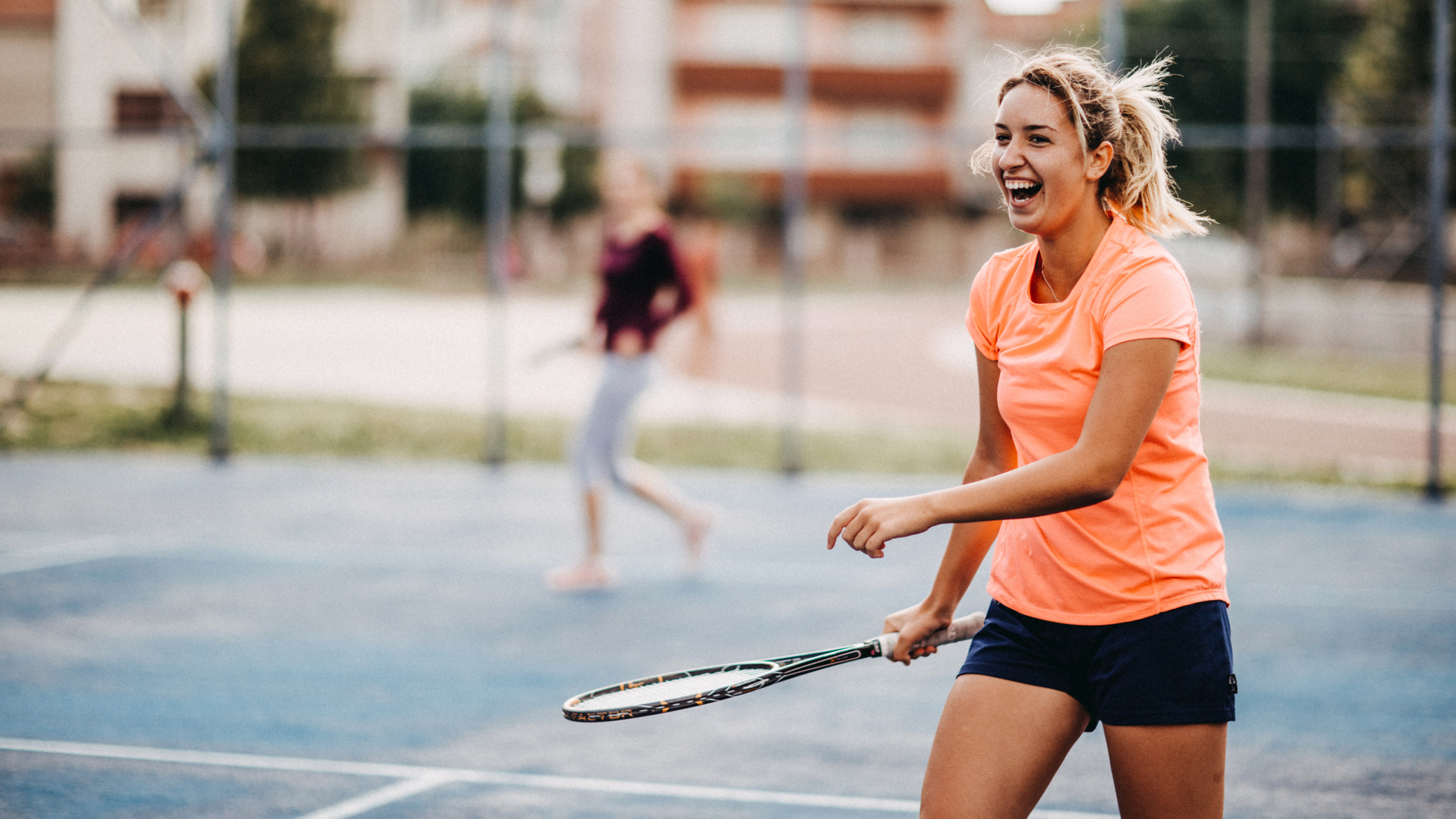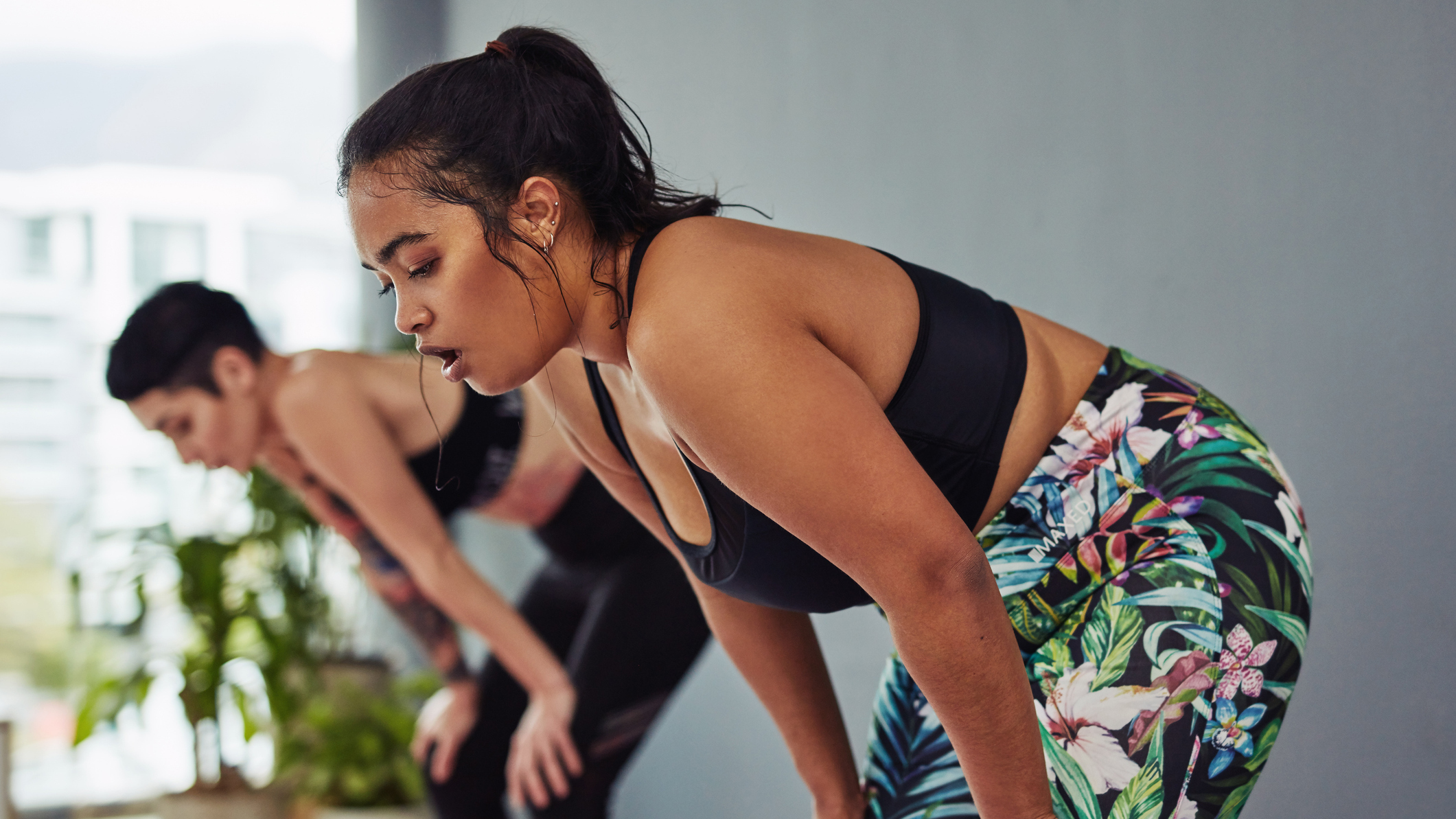I don’t enjoy HIIT so I swapped it for a less intense form of cardio—this is the one thing I noticed about my fitness levels
A fitness writer on how she started doing cardio more often

I used to swear by high-intensity cardio workouts to keep me fit. As part of my CrossFit style training regime, I’d do at least three 10- to 20-minute HIIT workouts per week that would leave me breathless, sweaty and with my heart rate in zones four (80%-90% of my maximum heart rate) and five (90%-100%).
However, I was becoming bored with this style of training and I was beginning not to enjoy HIIT style workouts anymore.
So, around six months ago, I decided to focus on strength training, coupled with playing tennis for an hour two every week. Tennis raises my heart rate, but not as much as HIIT workout.
So, is one to two hours of medium-intensity exercise enough, or is high-intensity training essential? I decided to find out.
What are the benefits of medium-intensity exercise?
Training in zone three, which is around 70 to 80% of your maximum heart rate, has specific benefits compared with high-intensity training, according to Alan Ruddock, associate professor of sport physiology and performance at Sheffield Hallam University.
“Elite endurance athletes will utilise this medium intensity work within their training programme because what they have to do is balance intensity and volume,” says Ruddock. “They’ll do quite a lot of low-intensity work, but they also need to push the boundaries [with high-intensity work].”
“Medium-intensity training blends mechanical demand, physiological stimulus, plus all of the psychological benefits,” says Ruddock. In other words, it’s good for your muscles and joints, your fitness levels and your mental health.
Start your week with achievable workout ideas, health tips and wellbeing advice in your inbox.
Crucially, medium-intensity exercise can be fun, compared with high-intensity exercise. “The scientific literature tends to suggest that this medium-intensity cardio [...] is actually the most enjoyable,” says Ruddock.
I can certainly vouch for this from my personal experience. High-intensity workouts were gruelling, and I often had to push myself through them despite my brain telling me to stop. During medium-intensity exercise, like tennis, the fatigue I feel is generally manageable, so I enjoy it a lot more.
What are the benefits of high-intensity exercise?

Although it might not always feel enjoyable, Ruddock says there are plenty of benefits to high-intensity cardio.
“The aim with HIIT is to spend a considerable amount of time above 90% of your maximum heart rate,” says Ruddock. “This helps us deliver more oxygen-rich blood to the body.”
High-intensity exercise can not only improve your cardio fitness, but have a positive affect on your immune and hormone health, and cognitive function.
High-intensity exercise might also be the quickest way to get fitter. “We most quickly see adaptations [in the body] with sprint interval sessions,” says Ruddock. “Studies have shown that just six to nine sessions of sprint training can create rapid adaptations of endurance capabilities.”
This is much quicker than medium-intensity exercise, which takes between six to 12 weeks to affect the body.
A 2008 study published in Medicine & Science in Sports & Exercise looked at the effects on VO2 max of different types of training. VO2 max is the maximum volume of oxygen the body is able to use during exercise and is a good indicator of fitness levels.
The study found that six weeks of zone three training improved participants’ VO2 max by 14.3%, whereas six weeks of zone five training improved participants’ VO2 max by 20.6%, showing how much quicker this style of exercise can improve your fitness.
My experience swapping HIIT for medium-intensity cardio
“I can exercise for longer, but just not as hard”
There are a few changes I’ve noticed since replacing HIIT with tennis. For one, because I enjoy tennis, I choose to play it more regularly and do it for longer, and that’s helped boost my endurance.
After a few months, I needed fewer breaks, I wasn’t as breathless and I could also play for longer. I also noticed running and cycling feel easier.
Saying that, I’ve lost some of my ability to sustain hard efforts. I notice that when I do push my body to its limits—challenging myself with lots of burpees or sprinting on a SkiErg machine—it feels more difficult.
I can exercise for longer, but just not as hard.
And even though I feel great after playing tennis, I don't necessarily get the same level of endorphins as after a demanding HIIT class.
Is medium-intensity exercise better than high-intensity exercise?
According to Ruddock, high-intensity exercise isn’t necessarily better than medium-intensity cardio, or vice versa. Variety matters.
“It’s a good idea to do both styles of exercise because you get training variation,” says Ruddock. “You don’t want to do one thing all the time, because it’s not going to provide you with physiological benefits that are afforded to versatility.
“Variation in training load is almost as important as having a good structure in place. I would suggest that the average person combines as many different intensities as possible.”
That might feel overwhelming, but you don’t need to cram all three into a week, especially if you’re just beginning to return to exercise.
I plan to add some short bursts of high-intensity exercise back into my routine, but I’ll be pleased if I can convince myself to do a HIIT workout twice a month, increasing the frequency of those workouts over time. After all, doing something consistently is a smarter approach than trying to overload myself with exercise promises I just can’t keep.
Alice Porter is a freelance journalist covering lifestyle topics including health, fitness and wellness. She is particularly interested in women's health, strength training and fitness trends and writes for publications including Stylist Magazine, Refinery29, The Independent and Glamour Magazine. Like many other people, Alice's personal interest in combining HIIT training with strength work quickly turned into a CrossFit obsession and she trains at a box in south London. When she's not throwing weights around or attempting handstand push-ups, you can probably find her on long walks in nature, buried in a book or hopping on a flight to just about anywhere it will take her.
You must confirm your public display name before commenting
Please logout and then login again, you will then be prompted to enter your display name.